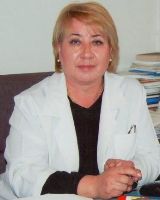DIFFICULTIES IN DIAGNOSIS OF NEUROFIBROMATOSIS TYPE 1 IN A CHILD
DOI:
https://doi.org/10.54890/1694-8882-2025-2-66Аннотация
Neurofibromatosis type 1 is one of the most common genetic diseases. It can be inherited in an autosomal dominant manner, but in almost half of the cases it occurs de novo. Neurofibromatosis type 1 is associated with café au lait spots, freckles in the inguinal and axillary areas, neurofibromas, Lisch nodules of the iris or choroidal anomalies, optic pathway gliomas and characteristic bone anomalies. In the world, the pathology occurs with a frequency of 1:3500 newborns. Mutation in the NF1 gene, which is located on chromosome 17 q11.2, leads to the inability to synthesize the cytoplasmic protein neurofibromin. This latter protein acts as a modulator of cell growth and differentiation, starting from intrauterine life, it is expressed by cells of the nervous system, endothelium and smooth muscles near blood vessels. The mutated protein and associated changes in the cellular environment lead to a very high risk of cerebrovascular changes. Deficiency of the NF1 gene leads to hyperactivation of RAS, which triggers the AKT/mTOR and Raf/MEK/ERK proliferation signaling pathways. As a result, benign neoplasms are formed - neurofibromas, which have a high tendency to malignancy. The gold standard for diagnosing neurofibromatosis type 1 is molecular genetic testing. The article provides information on the prevalence, clinical picture, diagnostic and treatment options for neurofibromatosis type 1, as well as our own clinical observation. The presented clinical case is interesting due to the progressive course of the disease in a child and the formation of multiple plexiform neurofibromas. Currently, there are no methods for preventing this pathology, but early diagnosis and targeted therapy improve the quality of life of patients. Targeted therapy can have a great impact and slow the growth of neurofibromas. Selumetinib is a selective inhibitor of mitogen-activated protein kinase types 1 and 2 (MEK 1,2). It blocks MEK activity and the Raf/MEK/ERK signaling pathway, which helps suppress the proliferation of tumor cells in which this signaling pathway is activated.
Ключові слова:
neurofibromatosis type 1, neurofibromas, childrenПосилання
1. Ferner RE, Gutmann DH. Neurofibromatosis type 1 (NF1): diagnosis and management. Handbook of clinical neurology. 2013;115:939-955. https://doi.org/ 10.1016/B978-0-444-52902-2.00053-9.
2. Tamura R. Current understanding of neurofibromatosis type 1, 2, and schwannomatosis. Int. J. Mol. Sci. 2021; 22(11):5850. https://doi.org/10.3390/ijms22115850
3. Шнайдер Н.А., Шаповалова Е.А. Эпидемиология факоматозов. Вестник клинической больницы № 51. 2011;9:46-51. [SHnajder N.A., SHapovalova E.A. Epidemiologiya fakomatozov. Vestnik klinicheskoj bol'nicy № 51. 2011;9:46-51. (In Russ.).]
4. Конторович А.К., Гусарев С.А. Нейрофиброматоз брюшной полости. Молодой ученый. 2016;15.2(119.2):15-17. [Kontorovich A.K., Gusarev S.A. Nejrofibromatoz bryushnoj polosti. Molodoj uchenyj. 2016;15.2(119.2):15-17. (In Russ.).]
5. Roberti V, Laghi A, Moramarco A, Giustini S, Roberti V, Laghi A, Moramarco A, et al. Cutaneous manifestations in neurofibromatosis type 1. Clin Ter. 2020;171 (5):371-377. https://doi.org/10.7417/CT.2020.2242
6. Miller DT, Freedenberg D, Schorry E, Ullrich NJ, Viskochil D, Korf BR, et al. Health Supervision for Children with Neurofibromatosis Type 1. Pediatrics. 2019;143(5): e20190660. https://doi.org/10.1542/peds.2019-0660
7. Ferner RE, Bakker A, Elgersma Y, Evans DGR, Giovannini M, Legius E, et al. From process to progress-2017 International Conference on Neurofibromatosis 1, Neurofibromatosis 2 and Schwannomatosis. Am J Med Genet A. 2019;179(6):1098-1106. https://doi.org/10.1002/ajmg.a.61112
8. Evans DGR, Salvador H, Chang VY, Erez A, Voss SD, Schneider KW, et al. Cancer and Central Nervous System Tumor Surveillance in Pediatric Neurofibromatosis 1. Clinical cancer research. 2017;23(17):e46-e53. https://doi.org/10.1158/1078-0432.CCR-17-0589
9. Ly KI, Blakeley JO. The Diagnosis and Management of Neurofibromatosis Type 1. Med Clin North Am. 2019;103(6):1035-1054. https://doi.org/10.1016/ j.mcna.2019.07.004
10. Gross AM, Wolters PL, Dombi E, Baldwin A, Whitcomb P, Fisher MJ, et al. Selumetinib in children with inoperable plexiform neurofibromas. The New England Journal of Medicine. 2020; 382(15): 1430-1442. https://doi.org/10.1056 /NEJMoa1912735
11. Wegscheid ML, Anastasaki C, Gutmann DH. Human stem cell modeling in neurofibromatosis type 1 (NF1). Experimental neurology. 2018;299:270-280. https://doi.org/10.1016/j.expneurol.2017.04.001







